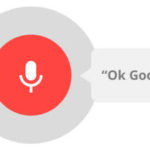A client of mine is building new office space at the moment, and that started me thinking about the love-hate relationship people (including myself) have with modern office spaces, particularly open-plan offices.
While personally, I am one of those ‘curled in in an over-stuffed leather sofa beside a fire, surrounded by wall-to-ceiling deep wooden bookshelves filled with volume upon volume, and don’t disturb me unless the world is ending’ type of people, I do very much appreciate how inspiring the right type of open-plan environment can be.
When planning any office space, there are many factors to take into consideration, from lighting, to distractions, to noise, to privacy, and more…
Psychology of the Office Space

University of Southern California | Master of Science in Applied Psychology Online
What is driving current office design?
According to SBFI, there are four primary drivers
- More Generations within the Workplace
- A Greater Focus on Team Performance
- Workplace Design as an Investment
- Increasing Competition for Talent
They also go on to discuss trends in workplace design including biophilic design.
Biophilic Design, Restmercial Comfort, what???
Two of the major trends in successful contemporary design are biophilic and restmercial.
Biophilic, meaning to bring elements of nature into the workspace, and restmercial meaning to bring elements of the home into the business environment.
Important elements
So, what are the most important elements to consider when planning an office environment that actually works?
“Contact with nature and design elements which mimic natural materials has been shown to positively impact health, performance and concentration, and reduce anxiety and stress. When it comes to creating office spaces that achieve this, it’s about taking the nuances of nature that we subconsciously respond to, such as colors and textures, and interpreting them. Ultimately improving the well-being, productivity and creativity of the workforce is key to the success of market leading organisations,” according to Mandy Leeming, design and development manager (UK) at Interface. [https://www.forbes.com/sites/karenhigginbottom/2014/10/21/employees-working-in-offices-with-natural-elements-report-higher-well-being/]
Employees who work in environments with natural elements reported a 13% higher level of well-being and are 8% more productive overall, according to a report of 3600 workers in eight countries in Europe, Middle East and Africa (EMEA).
Interestingly, 40% of workers across EMEA said they would feel most productive at their own desk in a solitary office, while 31% would feel most productive at their own desk in an open plan office. Flexible working was a surprisingly low preference, with just 11% of workers choosing a space that suits their needs as their productive way to work.
EMEA workers listed the following top five natural elements on their wish list for their ideal office space:
-
Natural light
-
Quiet working space
-
A view of the sea
-
Live indoor plants
-
Bright colours
Is anyone doing office design successfully?
The Bridgespan Group believes they have cracked the code on successful office design. They moved 70 employees from offices and cubicles on two floors of a building in Boston’s Back Bay to a dramatically different space fashioned out of the gutted top floor of a tower.
They saw their challenge to design a dramatically different kind of office that would enhance teamwork and insight around the projects at the heart of our work, while keeping costs down.
Their end result included:
- an open café, where staff bump into each other making coffee, or making sandwiches and catch up or take care of business
- a “laboratory” space with tables, sofas and white boards at the heart of the office, where teams meet and discuss work previously done in closed conference rooms
- a large, closed-off library space with lots of natural light that we call the “quiet car,” where people can work without interruption
- several small comfortable seating clusters throughout the office for small-group conversations
- a bank of small private rooms for people to use when they truly need privacy for meetings, phone calls, or individual work–but no private offices even for the most senior staff
- sitting and standing work stations where people can park themselves day-to-day
- glass-walled conference rooms so most meetings are seen by everyone, even if they aren’t heard
- background noise masking, so that conversations in the open are heard as mild hubbub rather than distinct, distracting words
- and lockers in which staff can keep personal items
The full article in the Harvard Business Review is available here: https://hbr.org/2014/10/an-open-office-experiment-that-actually-worked
So, how do YOU create an office environment that works for YOUR people?
The most important element is to ask them!
Take the information above as a guide, and then ask your people what is important to them.
The answers may surprise you…
Signed: someone who still loves her over-stuffed sofa and wall-to-ceiling books… 🙂



